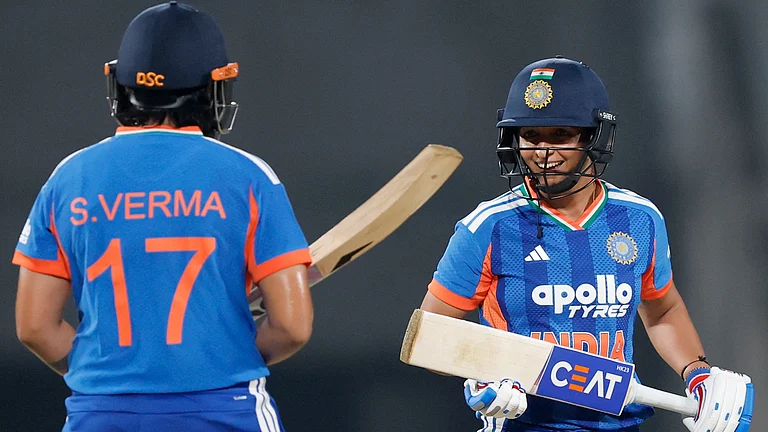Groans and sighs! That’s the usual reaction of the older generation when they talk about modern Indian youth and their apparent lack of attachment to our culture, religion and country. Our elders say India’s standards are collapsing as youth rush headlong into a love affair with the west. These grandees feel our culture will be blown away in the storm of modernisation, crass reality TV and the unbridled internet. Do I agree? Hell, no!
The truth is many of the older Indians complaining about the youth are the ones who are not in touch with India’s ancient culture, which was, at the core, all about confident open-mindedness. What do I mean by that? Let me give you a few examples, which will necessarily have to be old, because I think it is in the last 300 years that India has forgotten the true essence of its ancient culture.
What made us great in the past?
Sanskrit is apparently an unchangeable language. Not true. What we know as Sanskrit today is classical Sanskrit. In its ancient form, Vedic Sanskrit, it was a different, vibrant and flexible language. Ancient India accepted refugees and immigrants from across the world. Christianity came to India before it went to most countries of Europe. Jews found succour in India two and a half millennia ago. Zoroastrians were accepted into early medieval Gujarat. Siddi Muslims, brought in as slaves by the Arabs and Portuguese, escaped and founded their own minor kingdoms in western India. India was the America of the ancient world, accepting anyone who had good ideas and the spirit to drive them forward.
Foreigners (like the Southeast Asians) took on Indian names and culture because they found it attractive, just like people across the world Americanise themselves today. Furthermore, ancient Indians were open enough to learn from other cultures. The Greeks may have been beaten back when they tried to conquer our land 2,000 years ago, but Indians were open-minded enough to learn from the Hellenic invaders to celebrate the resplendent Gandhara art. The art of making idli, amongst the most popular of Indian snacks, was probably learnt from Indonesia.
Our open-mindedness extended even into realms which are deeply emotional, such as religion. There are more than a thousand versions of India’s seminal epic, the Ramayana. Many of these versions are quite different from each other. Some show Ravana as a purely evil demon, while others depict him as a great man and a devout Shivbhakt. Some show Sita as docile and submissive, others as fiery and warrior-like. These versions of Ramayana were all loved and respected.
Great Sufi Islamic saints found deep similarities between Hinduism and Islam. In his book, The Mingling of Two Oceans, Dara Shikoh, a Mughal prince, talked about the similarity between the concept of the Muslim Abu Arwah (the Father of All Souls) and the Hindu Parmatma (the Supreme Soul). The title adopted by Akbar, one of our greatest emperors, jahanpanah, or the ‘refuge of the world’, and not the usual ‘conqueror of the world’. Emperor Ashoka spread the message of love and peace when it wasn’t fashionable to do so. Rajaraja Chola was an ardent Shaivite Hindu, but still encouraged the construction of Buddhist viharas.
What does this tell us?
In the past, we were an open-minded and accepting society. That was the secret of our success. And our success was mind-numbing. Throughout most of recorded history, India was the richest economy in the world, contributing 25-33 per cent of the world’s gdp! The Roman emperor Vespasian had prohibited trade with India because his empire was facing currency shortages importing Indian goods and paying in gold/silver bullion. Despite not having massive gold mines, India has amongst the largest gold hordes in the world. Some historians believe this is the legacy of centuries of surpluses from gold-bullion-driven trade that India enjoyed.

Illustration by Sandeep Adhwaryu
Why we lost our mojo
What happened to us? How did we fall so dramatically from the dizzying heights we had occupied for thousands of years? A popular notion is that the British did this to us. Not true. The British didn’t destroy us. We destroyed ourselves.
We lost our mojo because we forgot who we were. We forgot our core culture. We forgot our confident open-mindedness. The concept of kalapani, which banned foreign travel, entered Hinduism, a religion which had produced the greatest sea-farers and traders of the ancient era. The self-assured mixing of religions for centuries gave way to insecure exclusivist thoughts. Scientific temper declined, even though science was never in conflict with religion in India. Unlike Japan, we did not capitalise on the great industrial advancements of the western world. And then began our decline. India was still the second largest economy in the world at the beginning of the British reign. But on a per-capita basis, we were already behind a rapidly rising Europe.
The British only made it obvious to us that we were in terminal decline. Merely 1,00,000 Britishers ruled 300 million Indians for 200 years. This was not just a conquest. This was humiliation that is unparalleled in human history. This happened because there was a class of Indians who controlled India for the British. General Dyer may have given the orders to fire at defenceless Indians in Jallianwala Bagh. But those who did the actual shooting were our fellow countrymen.
The last few centuries saw the rise of two closed-minded classes in India: the India-rejecters and the India-glorifiers. The India-rejecters reject our past. They are nihilistic, denying their Indian heritage and looking to impose foreign influences, among them are the anglophiles and the Marxists. They choose to believe there is nothing great in India’s past that we can cherish and learn from. The argument with these India-rejecters was joined by the India-glorifiers, led chiefly by the religious extremists. These India-glorifiers think everything about India’s past was perfect and can never be questioned. They think there isn’t much we can learn from foreigners. Obviously, I’m simplifying a bit only to get the point across. Both these classes, the India-rejecters and the India-glorifiers, are terrible for India and South Asia. The Indian elite were primarily composed of the India-rejecters for the first four decades of independence and we saw what an economic muddle they made of our land. Pakistan is administered by religious extremists (the insane Pakistani version of India-glorifiers) and God help that sorry mess of a country. The ancient Indian culture would have rejected both these extremist groups.
The youth of today?
In stark contrast to the previous generation, the youth of today fill my heart with hope. Why? Simple. Because they exhibit the confident open-mindedness that was quintessentially Indian in the ancient era. They are proud of their past, but are willing to question things they don’t agree with: most of the youth readers of my books appreciate the fact that I’ve dropped my caste-surname from the covers, but are eager to learn more about the brilliance of Lord Shiva.
They are proud of their own heritage, but willing to explore other cultures as well: a Muslim youth conveyed to me he is a proud Muslim, but he is inspired by the concept of Har Har Mahadev; a Hindu youngster wrote in to appreciate the fact that I keep saying insha’Allah despite being a devout Hindu. Today’s youth are eager to learn from the west, but are not in any way embarrassed about being Indian. MTV survives today only because it has Indianised itself. The youth of today are willing to come together on non-sectarian issues for the larger good. Notice the immense passion that the issue of corruption has aroused. The youth of today are far more eclectic in their reading habits than their parents ever were. Books on subjects ranging from call centres to religious philosophies have all found their way to success. Most authors on recent bestseller charts are Indian. But the youth are not closed-minded. When a foreigner like Paulo Coelho comes along with philosophies which inspire them, they pick that up too.
The youth of today are the children of the liberalisation era. They’ll grow up and make us proud. They will make India a great nation once again. We have many seemingly insurmountable hurdles. With the right attitude, we’ll crack them all!
I was asked by Outlook magazine to give my message to the youth. I’m not sure if I’m worthy enough to be giving any messages. But I will share a line of encouragement. A line which was first spoken in my youth, a few decades ago. An immortal line from Star Wars, which is remembered to this day: “May the Force be with you!’ Maybe we can Indianise that a little bit: May Shakti be with you!
(The writer’s novels The Immortals of Meluha and The Secret of the Nagas are best-sellers.)

























